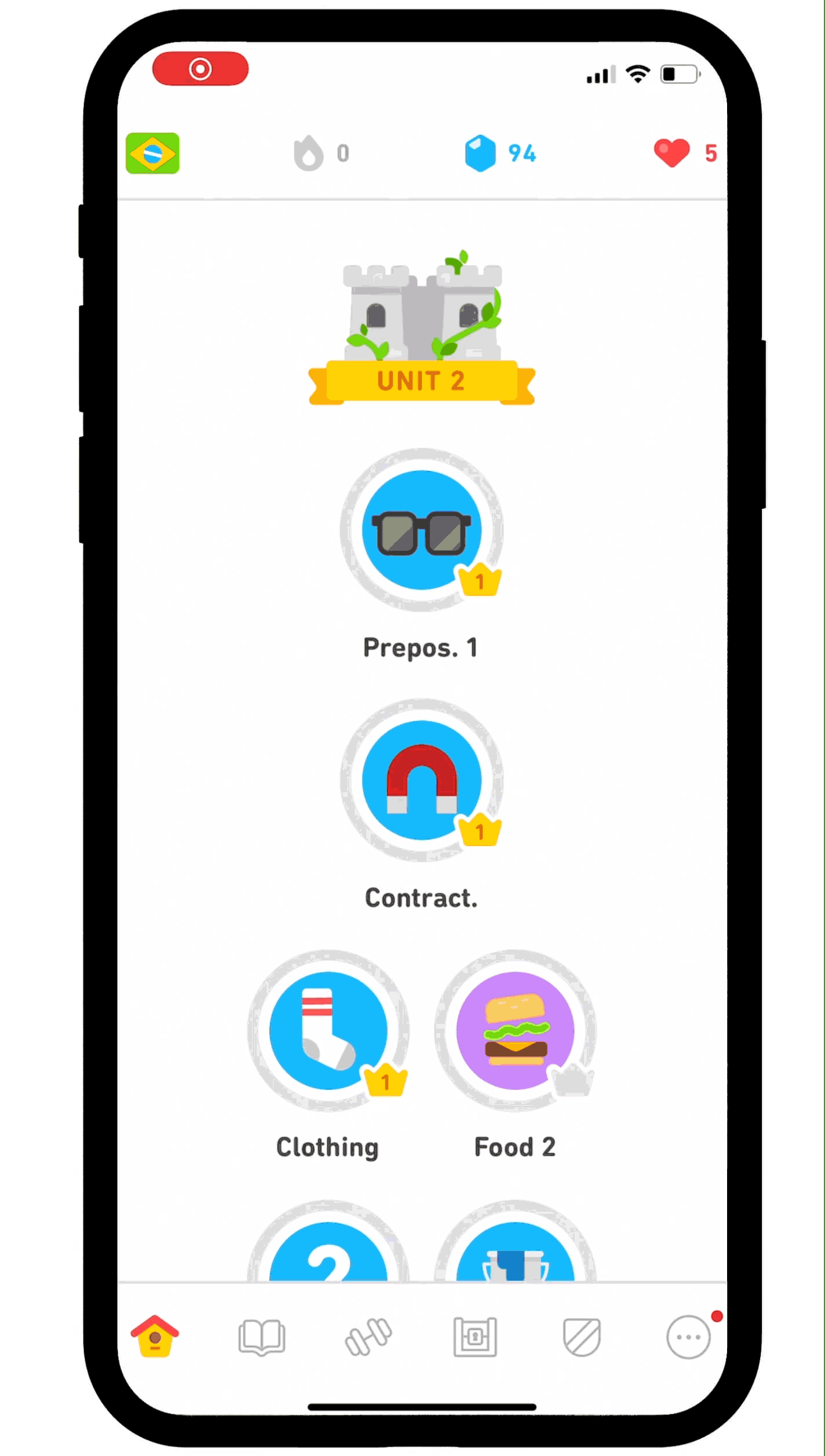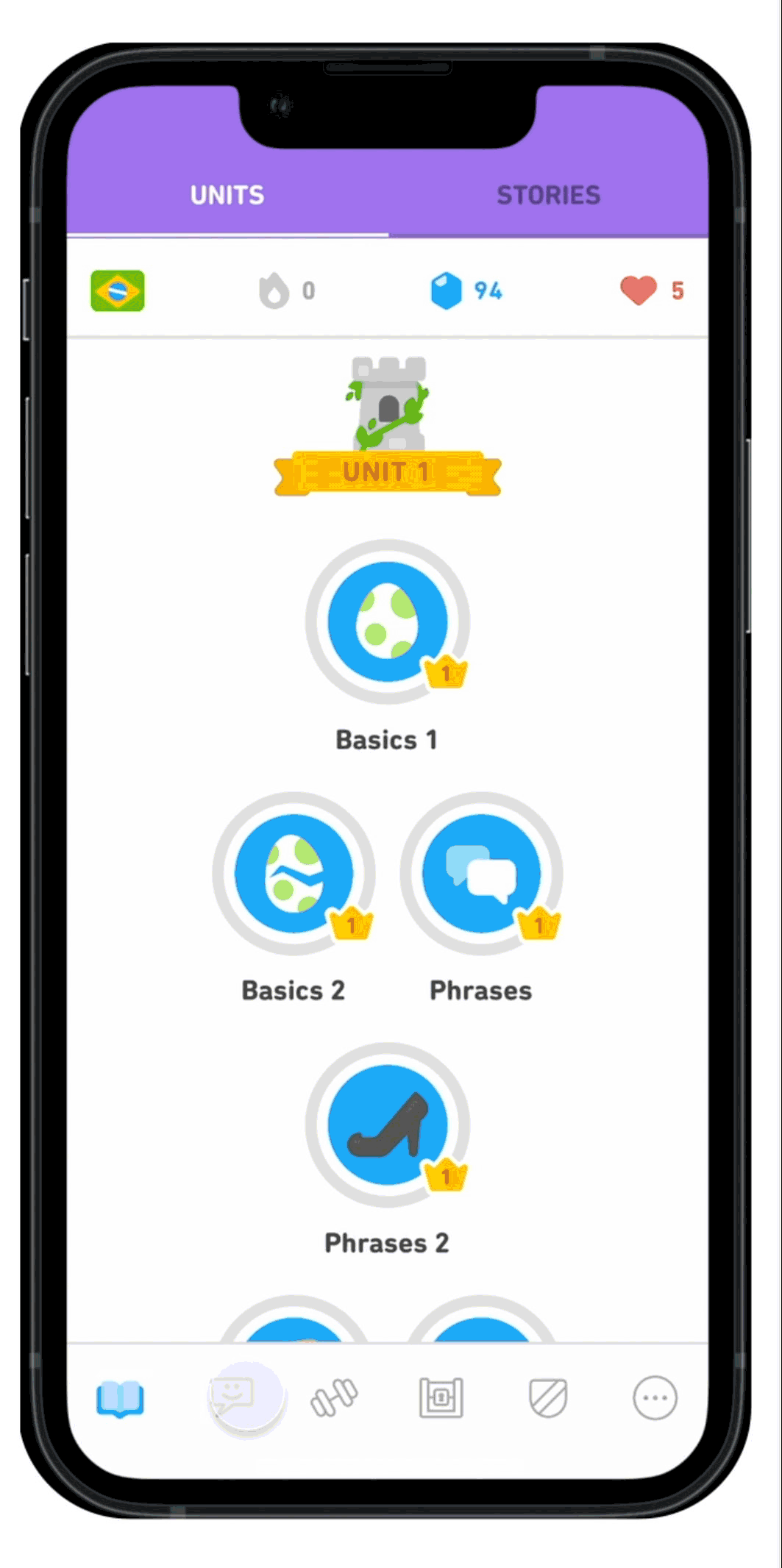
Duration
4 weeks
Focus
User Research
Market Analysis
User Interviews
User Testing
Deliverables
Prototype
UX Flow
Feature Design
Industry
Language Learning
Introduction
Duolingo is an American educational technology company that produces apps for language learning and provides language certification. On its main app, users can practice vocabulary, grammar, pronunciation, and listening skills using spaced repetition.
Problems
Duolingo is a functional app where users learn different languages on their own. We know that the best way to learn a language is through conversational practice, not just grammar and vocabulary. Duolingo offers great strategies to tackle challenges through grammar but doesn't offer practical services with real people, which would help a lot in the learning process.
Goals
-
Adding a new feature to Duolingo that connects users and allows them to practice a language through conversational groups
-
Helping students improve their vocabulary and elevate conversation skills
-
Bringing more students to the platform through an attractive feature
-
Allow users to have immersive experiences with native speakers

How can Duolingo offer an immersive experience
and encourage people to practice a language?
Design Process

Step 1: Research
Competitive Analysis:

Research Questions:
What platforms do people use to learn a language?
What do people like the most about this platform?
Do students have native people to practice the language with?
What are alternatives when they can't have an immersive experience with native people?
What are the biggest problems that people deal with when learning a language?
What are students' goals with the language?
User Interviews:
Through a fluid call interview with five participants, I tried to capture their emotional, social, and irrational motivations that affect the way these users behave, focusing on their current problems or pain points, and ultimate goals. These were a few main points that interviewees expressed during the sessions:

Insights
Goals and Needs:
-
Become fluent in a certain language
-
Practice grammar, listening, and conversation
-
Learn a second language to adapt to the work environment
-
Improve possibilities to get a job abroad
-
Deepen connection to other cultures
-
Travel and explore the world
-
Improve memory, problem-solving, critical-thinking skills, concentration, ability to multitask, and better listening skills.
Pains and Frustrations:
-
People can't afford immersive experiences abroad
-
Hard to find native people to practice with
-
Current apps focus on grammar only
-
Users get bored easily with learning apps method
-
People are shy and don't feel comfortable making mistakes in front others
-
Users feel frustrated by forgetting the words and expressions
Step 2: Define
Users Personas:
Based on insights from user interviews, I was able to define a persona that represents a user's behavior, needs, frustration, personality, and goals. Antony is also a Duolingo target.

Sitemap
A sitemap was created to provide information about the pages, categories, and other files on the app.

Task Flow
In Task Flow, we show the high-level steps that a user would take to access the live streaming.

User Flow
In User Flow we have a path that the user took to conclude a task, adopting a dog on Pet Rescue's website.
.png)
Step 3: Ideate and Prototype
Design
To implement the new feature I chose to make some changes to the current Duolingo app and organize the information architecture.




I implemented a new section called "Let's talk" which brings three different categories that users can choose and start practicing their target language with native people through live streamings.

-
Closer connection to native speakers
-
Immersive learning available from anywhere
-
Makes language learning a dynamic and interactive experience
-
Enhances real-time speaking, listening, and adaptation
-
Potential for monetization through premium plans and certified tutors
Impact and Benefits:
Step 4: User Testing and Iterations
Objective:
The goal is to evaluate the new feature by testing it on users who are currently learning a second language. I want to hear from them their perspective and how they complete tasks.

Affinity Map:
User testing helped me to unify large amounts of data by finding relationships between concepts and ideas. They allowed me to organize facts, opinions, and issues in order to help diagnose complex problems, and identify common issues and how to move to the next step.
.png)
Iterations:
With the user's feedback and ideas, I could move to the next step and bring their ideas in order to improve my feature.

Users now can see upcoming live streams and join groups that match their level.

I included in each card the language level, so users can join live stream and voice rooms that match their level and it allows them to follow the conversation.
Conclusions
-
My initial idea was only to bring one category to the Duolingo app, such as Chat, but once I did the Competitor Analysis I realized that implementing audio and video live streamings would bring much more positive results to my project.
-
My experience testing competitors' apps made me realize that hardworking people, sometimes with low internet connections, make a huge effort to learn and listen to others.
-
Language learning apps with streaming and interaction allow people to learn about different cultures.




